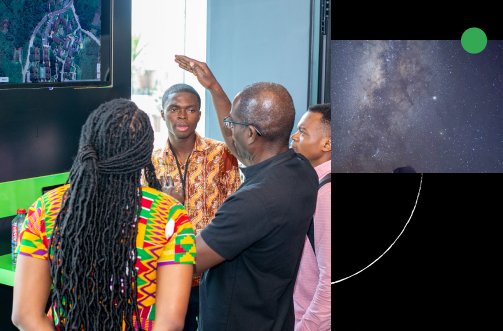
T Saensuksopa
Authored Publications
Sort By
Triaging mammography with artificial intelligence: an implementation study
Sarah M. Friedewald
Sunny Jansen
Fereshteh Mahvar
Timo Kohlberger
David V. Schacht
Sonya Bhole
Dipti Gupta
Scott Mayer McKinney
Stacey Caron
David Melnick
Mozziyar Etemadi
Samantha Winter
Alejandra Maciel
Luca Speroni
Martha Sevenich
Arnav Agharwal
Rubin Zhang
Gavin Duggan
Shiro Kadowaki
Atilla Kiraly
Jie Yang
Basil Mustafa
Krish Eswaran
Shravya Shetty
Breast Cancer Research and Treatment (2025)
Preview abstract
Purpose
Many breast centers are unable to provide immediate results at the time of screening mammography which results in delayed patient care. Implementing artificial intelligence (AI) could identify patients who may have breast cancer and accelerate the time to diagnostic imaging and biopsy diagnosis.
Methods
In this prospective randomized, unblinded, controlled implementation study we enrolled 1000 screening participants between March 2021 and May 2022. The experimental group used an AI system to prioritize a subset of cases for same-visit radiologist evaluation, and same-visit diagnostic workup if necessary. The control group followed the standard of care. The primary operational endpoints were time to additional imaging (TA) and time to biopsy diagnosis (TB).
Results
The final cohort included 463 experimental and 392 control participants. The one-sided Mann-Whitney U test was employed for analysis of TA and TB. In the control group, the TA was 25.6 days [95% CI 22.0–29.9] and TB was 55.9 days [95% CI 45.5–69.6]. In comparison, the experimental group's mean TA was reduced by 25% (6.4 fewer days [one-sided 95% CI > 0.3], p<0.001) and mean TB was reduced by 30% (16.8 fewer days; 95% CI > 5.1], p=0.003). The time reduction was more pronounced for AI-prioritized participants in the experimental group. All participants eventually diagnosed with breast cancer were prioritized by the AI.
Conclusions
Implementing AI prioritization can accelerate care timelines for patients requiring additional workup, while maintaining the efficiency of delayed interpretation for most participants. Reducing diagnostic delays could contribute to improved patient adherence, decreased anxiety and addressing disparities in access to timely care.
View details
User-Centered Delivery of AI-Powered Health Care Technologies in Clinical Settings: Mixed Methods Case Study
Randall Brandt
Hien Brown
Christine Silva
JMIR Human Factors (2025)
Preview abstract
Background:
Providers spend a large percentage of their day using electronic health record (EHR) technology and frequently report frustration when EHR tasks are time-consuming and effortful. To solve these challenges, artificial intelligence (AI)–based enhancements to EHR technology are increasingly being deployed. However, AI-based implementations for EHR features often lack user-centered evaluation.
Objective:
This study evaluates, using a user-centered approach, the implementation of an AI-powered search and clinical discovery tool within an EHR system.
Methods:
We conducted a mixed methods study consisting of interviews, observations, and surveys for 5 months.
Results:
High adoption rates for the AI-based features (163/176, 93% users after 3 months) and significant increases across key metrics, including user satisfaction (U=49; P<.001) and perception of time saved (U=49; P<.001), demonstrated that the AI-based features were not only successfully integrated into various clinical workflows but also improved the user experience for clinicians.
Conclusions:
Our results underscore the feasibility and effectiveness of using a user-centered approach for the deployment of clinical AI tools. High adoption rates and positive user experiences were driven by our user-centered research program, which emphasized close collaboration with users, rapid incorporation of feedback, and tailored user training. This study program can be used as a starting framework for the design and integration of human-centered research methods for AI tool deployment in clinical settings.
View details
A mobile-optimized artificial intelligence system for gestational age and fetal malpresentation assessment
Ryan Gomes
Bellington Vwalika
Chace Lee
Angelica Willis
Joan T. Price
Christina Chen
Margaret P. Kasaro
James A. Taylor
Elizabeth M. Stringer
Scott Mayer McKinney
Ntazana Sindano
William Goodnight, III
Justin Gilmer
Benjamin H. Chi
Charles Lau
Terry Spitz
Kris Liu
Jonny Wong
Rory Pilgrim
Akib Uddin
Lily Hao Yi Peng
Kat Chou
Jeffrey S. A. Stringer
Shravya Ramesh Shetty
Communications Medicine (2022)
Preview abstract
Background
Fetal ultrasound is an important component of antenatal care, but shortage of adequately trained healthcare workers has limited its adoption in low-to-middle-income countries. This study investigated the use of artificial intelligence for fetal ultrasound in under-resourced settings.
Methods
Blind sweep ultrasounds, consisting of six freehand ultrasound sweeps, were collected by sonographers in the USA and Zambia, and novice operators in Zambia. We developed artificial intelligence (AI) models that used blind sweeps to predict gestational age (GA) and fetal malpresentation. AI GA estimates and standard fetal biometry estimates were compared to a previously established ground truth, and evaluated for difference in absolute error. Fetal malpresentation (non-cephalic vs cephalic) was compared to sonographer assessment. On-device AI model run-times were benchmarked on Android mobile phones.
Results
Here we show that GA estimation accuracy of the AI model is non-inferior to standard fetal biometry estimates (error difference -1.4 ± 4.5 days, 95% CI -1.8, -0.9, n=406). Non-inferiority is maintained when blind sweeps are acquired by novice operators performing only two of six sweep motion types. Fetal malpresentation AUC-ROC is 0.977 (95% CI, 0.949, 1.00, n=613), sonographers and novices have similar AUC-ROC. Software run-times on mobile phones for both diagnostic models are less than 3 seconds after completion of a sweep.
Conclusions
The gestational age model is non-inferior to the clinical standard and the fetal malpresentation model has high AUC-ROCs across operators and devices. Our AI models are able to run on-device, without internet connectivity, and provide feedback scores to assist in upleveling the capabilities of lightly trained ultrasound operators in low resource settings.
View details
